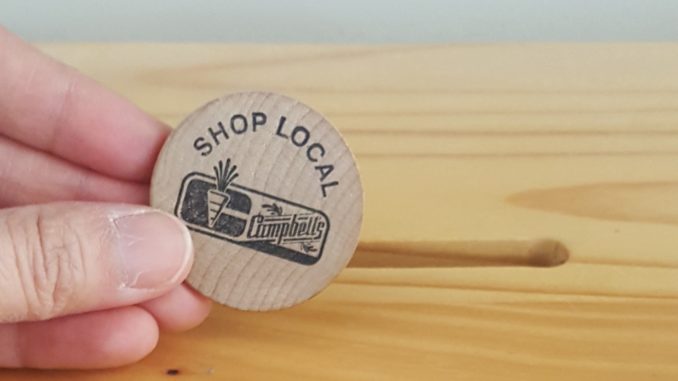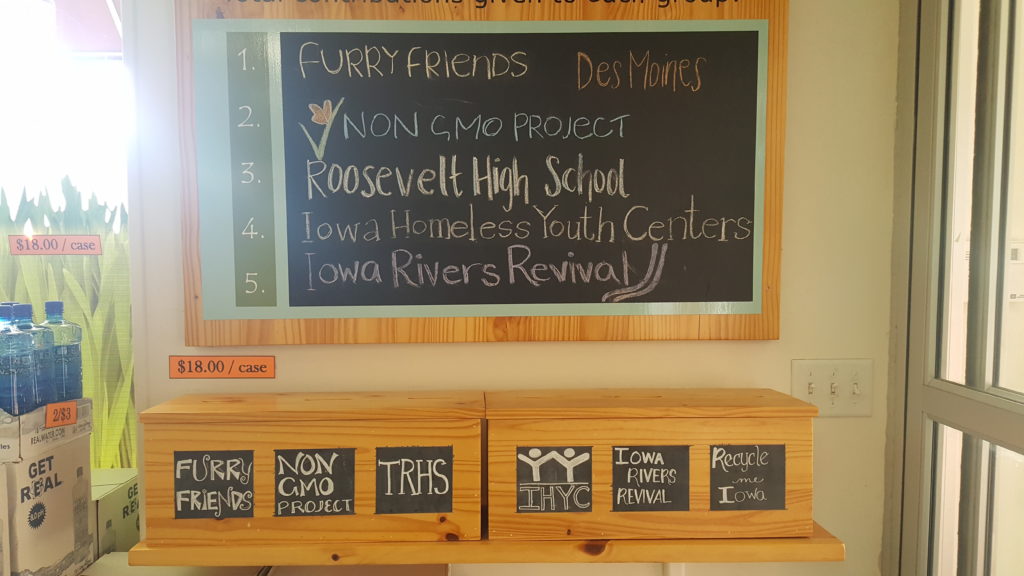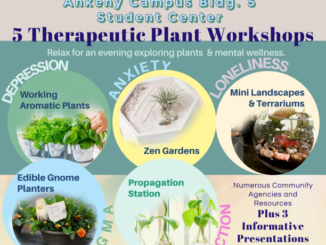
It’s winter in Iowa where evening temperatures are frequently below freezing. Before you get in your car, you pass a homeless teenager and a homeless puppy. You have limited time and money, so you can only help one of them. Which one would you choose?
In the past, I would’ve definitely chosen the teenager.
If you chose to help the puppy, you would be behaving similarly to the customers who shop at my favorite local grocery store, Campbell’s Nutrition, in Des Moines. They’re choosing to donate to a non-profit that gives shelter to non-human animals over centers serving young adults.
When customers at Campbell’s bring a grocery bag from home, the cashier gives them a wooden token, representing 10 cents, for reusing a bag. On the way out the door, customers put the 10 cent token in a donation box for a local non-profit organization of their choice and the store will make a contribution on their behalf.

This is a small test for how we choose our charities. It reveals that people give more to vulnerable populations that need help to survive. In this case, it’s the puppy. The name of the non-profit organization and pictures of their population served are important factors in decision making.
As of Feb. 10, 2020, the list of non-profit organizations at Campbell’s included: Furry Friends Refuge, the Non-GMO Project, Roosevelt High School, Iowa Homeless Youth Centers (IHYC), Iowa Rivers Revival, and Recycle Me Iowa. Furry Friends, a “no-kill” shelter for animals, had a total of $40.90 in donations. IHYC had $32.53.

The difference in donation totals was much greater on Sep. 11, 2018 when I started to take notice and photos. Furry Friends had a total of $678.78 and IHYC only had $315.59—behind four other organizations!

I was shocked and enraged when I texted my girlfriends. “Today. Save the dogs and then the children! Makes sense to me. Actually save everything else, including the rivers, before children. Screw recycling though. Who needs that?”
I was dealing out some heavy-handed sarcasm. I didn’t understand why homeless youth were getting less than half of the money going towards animals. What is the world coming to when we can watch other human beings suffer?
I texted, “Maybe people don’t know what IHYC is. They should call it ‘furry little people.’ So cute.” At the time, I didn’t know that this idea could be backed by the findings of an academic study conducted in 2014.
Two professors, Arnold Arluke and Jack Levin, asked, “Do we care more about animals’ suffering over humans?” They asked 240 students about the sympathy and distress they felt after reading identical stories about a human infant, puppy, dog, and adult human who had all been hurt with a baseball bat. The students showed a significantly greater amount of sympathy for the infant, puppy, and dog than for the adult human. The age and vulnerability of the subject, not the species, mattered the most. The results showed that a puppy and infant are seen as more vulnerable than an adult dog or human, so the students were more likely to give them more sympathy.
When the sympathy test is applied to the donations box at Campbell’s, it makes sense that Furry Friends would elicit more sympathy and donations. Based on the names, one can envision a cute and furry puppy, but it is more difficult to imagine the youth at IHYC due to the acronym and the individual’s perception of what it means. The image of that youth may vary too—some people may think of a young adult, but others may think of a child.
Every time I received a wooden token, I didn’t hesitate to put it in the IHYC donation box, but I also have had some exposure to the organization and its staff. When I started writing this article, I thought that I would argue for others to do the same; but my mind has changed from prioritizing humans every time.
The solution is not to choose humans over dogs. We’re all connected and the well-being of one living creature impacts the others. I’m for eliminating as much suffering as possible with a focus on long-term solutions that benefit our planet as well. There are organizations such as Animal Charity Evaluators, Compassion in World Farming USA, and Animal Equality which provide research, data, and expert guidance on how to donate effectively. They have said that the way to end the most animal suffering is to focus on helping farmed animals.
Animal Charity Evaluators said, “For every one dog or cat euthanized in a shelter, about 3,400 farmed land animals are confined and slaughtered. Of the 9.2 billion farmed land animals killed in 2015 in just the U.S., 8.8 billion were chickens … This amounts to 279 chickens killed per second.”
Campbell’s could add a donation box for one of the farmed animal charities in addition to Furry Friends. They could also host an IHYC representative speaker or presentation in their cafe’s dining area to educate customers on their mission, vision, and youth served. IHYC could humanize and market their brand name better. In turn, customers could make a more informed decision and possibly a bigger contribution beyond their 10 cent token.




Be the first to comment